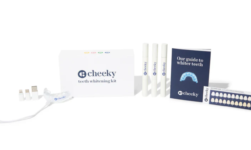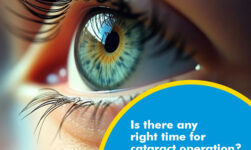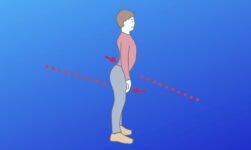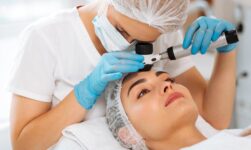
The seemingly endless NHS waiting list for orthodontic treatment for children obviously makes a large number of parents feel frustrated. Thus, they have no other option than knocking on private orthodontists to ensure their children get the necessary treatment at the right time. If the truth is to be told, orthodontic treatments are most effective before adolescence. Why? The reason is pretty simple. At this stage the mouth is still growing and the jawbones are still flexible. Whereas, post adolescence the jawbones become hardened and are not very flexible anymore.
But the pace at which the NHS works, it prevents thousands of youngsters from getting the right orthodontic treatment freely at the time when they need most. A renowned NHS dentist puts the figure to at least 20,000. That is no less than 20,000 children are being denied free braces a year. Where does the discrepancy lie? The NHS local commissioning teams are in charge of sealing contracts with dentists for orthodontic treatments. The volume of demand grossly surpasses the number of contracts that are signed every year.
The BOT or British Orthodontic Society maintains a very clear stand in this context. According to it, children, who are in need of orthodontic care, must be provided with treatment during the optimum time in their development. On average this is about the age 12 although the figure may slightly vary in a very small number of cases. Even the NHS agrees with it and says the best age to get braces is around 12 or 13 when most children have their full set of adult teeth erupted while their mouth is still under developing.
Does my child in need of orthodontic care?
As per the NHS statistics one in every three children needs orthodontic therapy to correct the irregularities of the jaws and the teeth. The problems for which they need the therapy includes the following –
- Crooked teeth
- Gapped teeth
- Overlapping teeth and
- Malocclusion
Crooked teeth make one prone to jaw problems, gum infection, tooth cavities and bad breath or halitosis. Gapped teeth put a child in the danger of developing gum problems. Overlapping teeth may make the teeth severely crooked. Malocclusion is the other name for bad bite. It includes
- Cross bite – the teeth in the upper jaw bit on the inside of the lower ones.
- Overbite – it is also called the problem of protruding teeth. The front teeth of the upper jaw overlap the front teeth of the lower jaw.
- Open bite – the teeth in the upper jaw do not make proper contact with those in the lower one.
- Under bite – the teeth on the lower jaw project beyond those of the upper ones.
In course of time and without proper treatment, bite disorders further disrupt oral health. Problems like tooth cavities, gum disease, tooth loss, difficulties in eating and speaking, wearing of tooth enamel are very common.
How should I know that my child needs orthodontic therapy?
The need for orthodontic therapy is manifested in children through certain signs and signals. These include the following –
- The teeth do not come and fuse together when biting
- Breathing through the mouth
- Snoring
- Speech impairment
- Crowded or protruding teeth at the front
- Difficulties in biting or chewing
- Difficulty in cleaning the teeth
- Abnormal movement of the jaw while opening or closing the mouth
How long my child has to wait for NHS orthodontic therapy?
As far as children dentistry is concerned, the NHS waiting time is simply frustrating. As we all are aware about the NHS offers free orthodontic therapy for young people under 18 who have a clear medical need for such treatments. But since such demand is very high there usually is a long waiting list specially in areas that have limited number of qualified NHS orthodontists. Even when a child is qualified for the therapy the waiting time can range anywhere between 6 months and 2 years or even more. In 2019 BBC reported an incident in Wales about how a youngster was waiting for 6 years to get NHS braces.
Benefits of private orthodontic care for children
With the development of the jaws and the teeth of a child when his or her orthodontic issues are timely treated, more serious dental health complications can easily be avoided. This way it is also possible to avoid even more costly treatments in future. But this is hardly possible to achieve under the NHS. Other than the long waiting list the NHS offers limited treatment options for children.
For example, the NHS orthodontic therapy only includes conventional fixed metal braces. Thus, more advanced and discreet treatment options do not exist for NHS patients. The modern treatment options that are not available at the NHS include the following –
- Lingual braces like Incognito – the brackets in this system are fitted discreetly at the back of the teeth.
- Clear aligners like Invisalign – it practically remains invisible inside the mouth and is made from medical-grade polyurethane resin. The easily removable aligners can be taken out during meals and snacks. Unlike the conventional fixed metal braces, the system also allows effective brushing and flossing of the teeth to maintain optimum oral hygiene throughout the treatment phase.
- Ceramic braces – it uses tooth-coloured brackets that are exactly of the same size and shape as metal braces. Thus, ceramic braces easily blend with the teeth.
Thus, parents have to switch over from the NHS to private orthodontists to secure the future of their youngsters once and for all.
Private orthodontic therapies for children – payment options
The cost of private orthodontic therapies for children is never fixed and keeps varying depending on certain factors. The factors include –
- The level of complexity involved in a case
- The expertise of the dentist
- Treatment mode to be adopted – it is relevant mentioning that lingual braces and aligners are usually more costly.
Our friendly Invisalign dentist in London points out some private oral health insurance plans do offer orthodontic cover for children but if that is attested as a medical necessity. However, most of them only reimburse only a percentage of the treatment cost. On the other hand, some private orthodontists offer free consultations and easy payment options that allow parents break down the treatment cost into monthly instalments in their attempt to make the necessary treatments more easily affordable.





